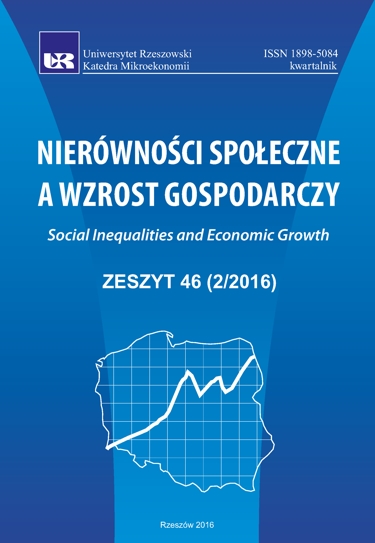The Role of Innovation in Achieving Social Cohesion
DOI:
https://doi.org/10.15584/nsawg.2016.2.10Keywords:
social cohesion social innovation, Europe 2020 strategyAbstract
Current socioeconomic transformations in the EU and its environment create a need to pay attention not only to ensuring consistency in economic, but also social dimension. In particular, the last economic and financial crisis of 2008 caused an increase in social problems, such as: unemployment, poverty, social exclusion. It is postulated to support efforts in order to counteract the existing diversifications in the social sphere, and their deepening, as indicated in the Europe 2020 strategy. In the paper, on the basis of selected indicators, social cohesion in the EU has been discussed. EU countries with the highest degree of cohesion include: Denmark, Finland and Sweden, while the countries with the lowest level are: Lithuania, Latvia, Bulgaria, Greece and Romania. It was stressed that many factors contribute to the improvement of social cohesion in the EU, including innovations. The concept of social innovations and actions undertaken in the EU in order to promote them were presented. Social innovations are supported in the EU by different instruments, including through networking, creating favourable framework conditions for their development, through facilitating access to information on potential sources of their financing, and also financial resources are transferred, including from structural funds, promoting social innovations in different areas. However, for the further development of social innovations in the EU, it is necessary to create an appropriate ecosystem, as well as pay attention to the factors that create restrictions in terms of their further development.Downloads
Download data is not yet available.
Downloads
Published
2020-11-10
How to Cite
Dziembała, M. (2020). The Role of Innovation in Achieving Social Cohesion. Social Inequalities and Economic Growth, 2(46), 191–201. https://doi.org/10.15584/nsawg.2016.2.10
Issue
Section
Articles
License
Copyright (c) 2016 University of Rzeszow

This work is licensed under a Creative Commons Attribution-ShareAlike 4.0 International License.


